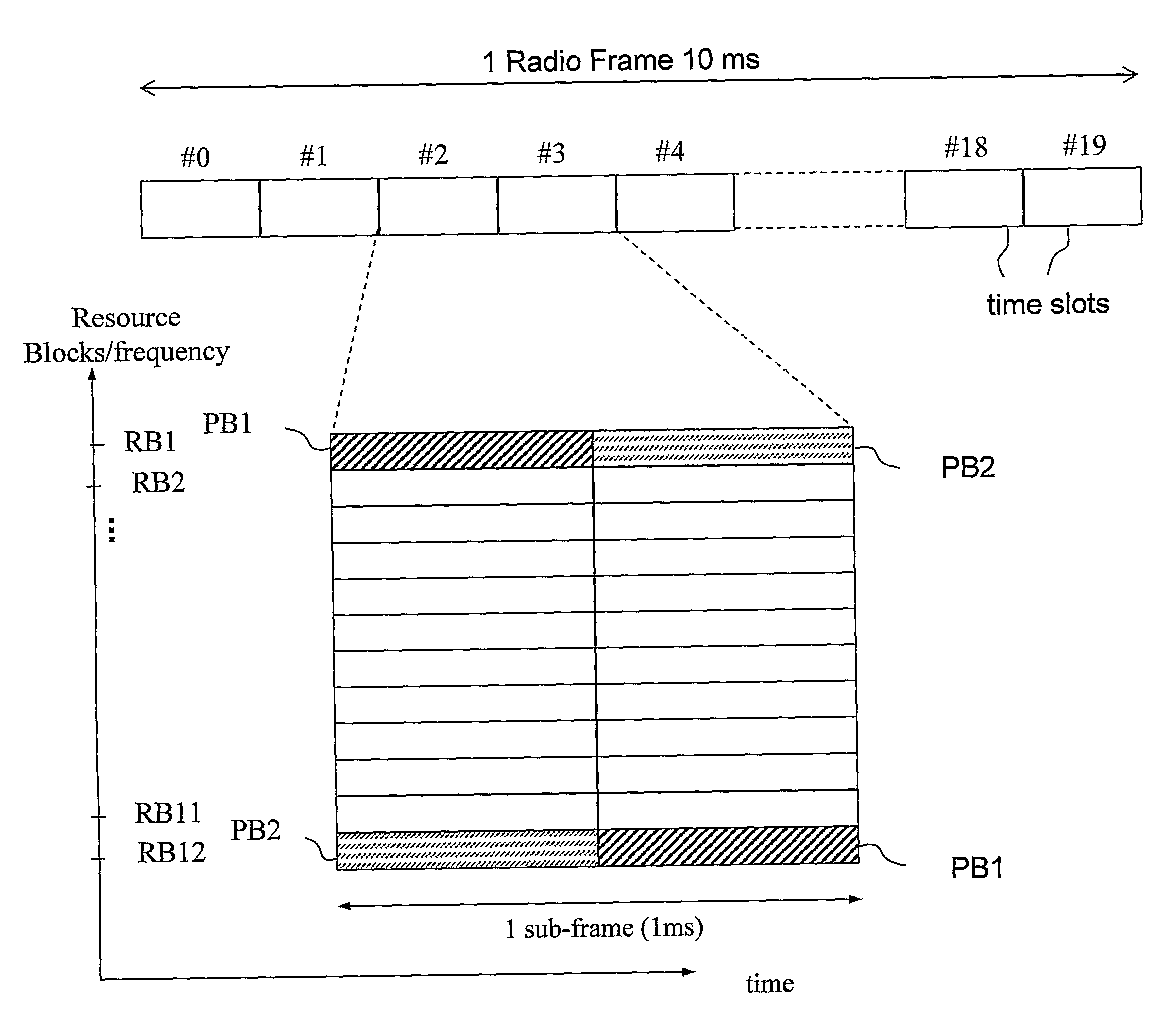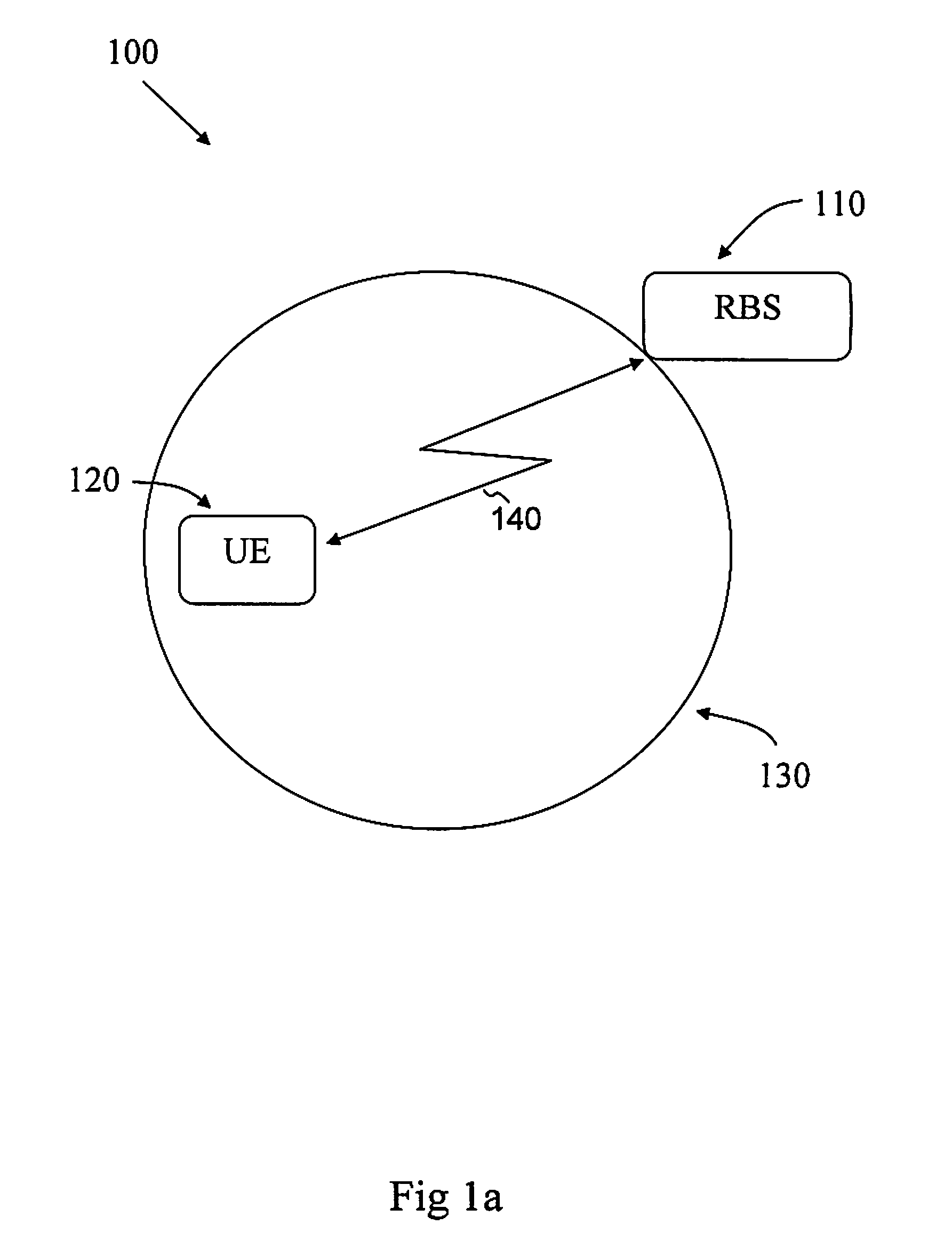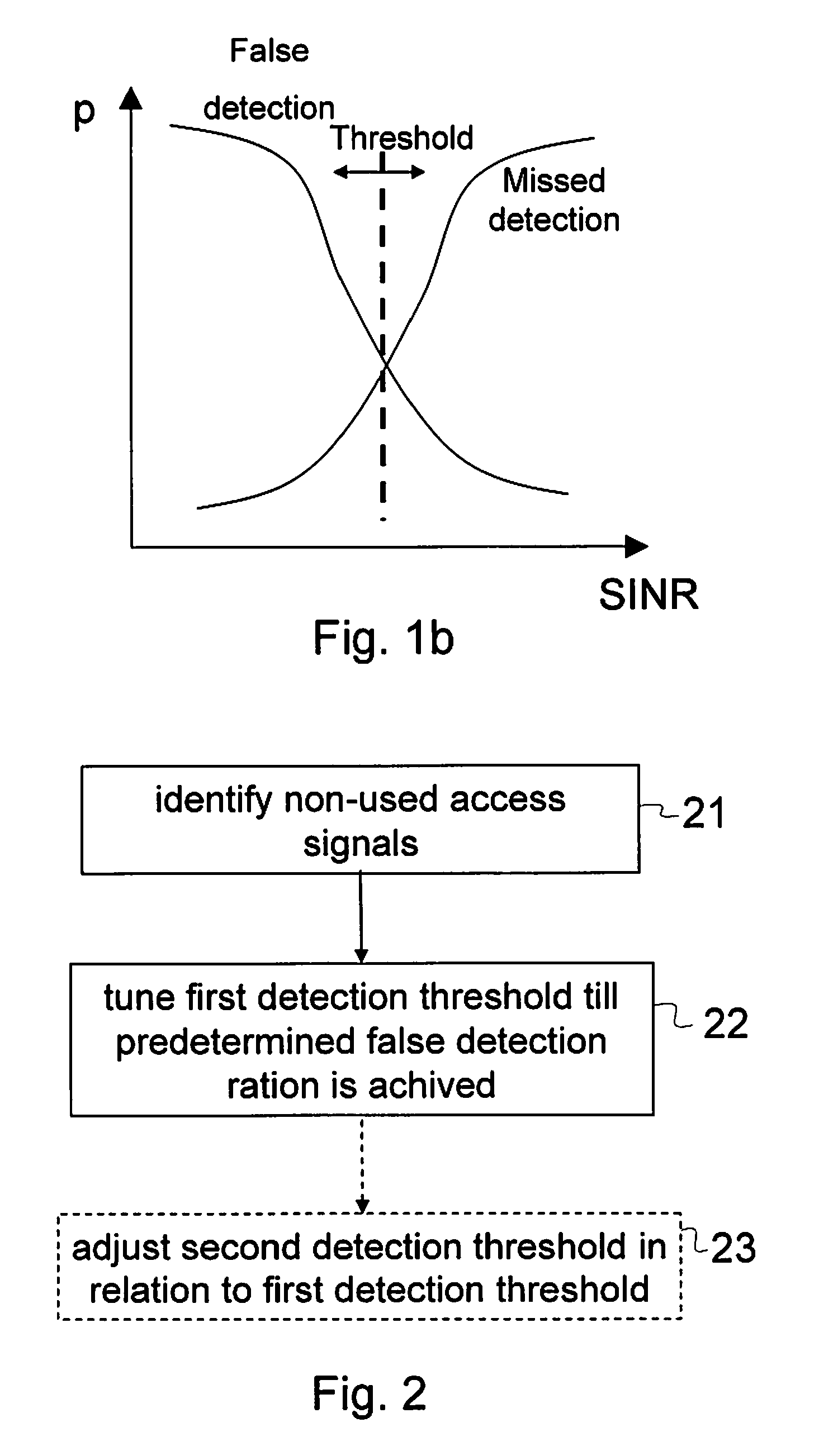Adjustment of radio detection level for request signals based observed false detection
a radio detection and request signal technology, applied in the field of radio communication, can solve problems such as known false detection
- Summary
- Abstract
- Description
- Claims
- Application Information
AI Technical Summary
Benefits of technology
Problems solved by technology
Method used
Image
Examples
Embodiment Construction
[0038]FIG. 2 is a flow chart of the steps of the invention. In a first step 21 time slots are identified in which one or more of a plurality of access signal resources is / are unavailable to UEs and cannot be used by a UE for accessing the network. The identification is based on at least some of the access signal resources are possible to assign to UEs for use in defined time slots. Assignable access signal resources that are not assigned to any UE for one or more time slots cannot be used by any UE during those time slots. If an access signal is received on an access signal resource in a time slot when it is non-assigned, its detection is identified as being false.
[0039]In the following step, 22, an access signal detection threshold level is adjusted, such that the ratio of false detections converges to a desired target ratio. The ratio of false detection is calculated as the number of identified false detections versus the number of potential false detections. Any unavailable acces...
PUM
 Login to View More
Login to View More Abstract
Description
Claims
Application Information
 Login to View More
Login to View More - R&D
- Intellectual Property
- Life Sciences
- Materials
- Tech Scout
- Unparalleled Data Quality
- Higher Quality Content
- 60% Fewer Hallucinations
Browse by: Latest US Patents, China's latest patents, Technical Efficacy Thesaurus, Application Domain, Technology Topic, Popular Technical Reports.
© 2025 PatSnap. All rights reserved.Legal|Privacy policy|Modern Slavery Act Transparency Statement|Sitemap|About US| Contact US: help@patsnap.com



